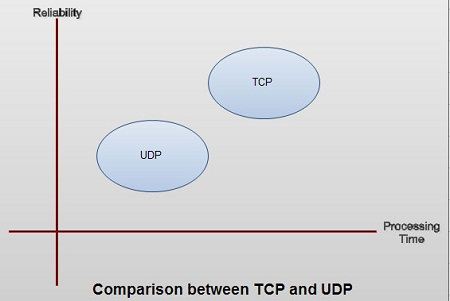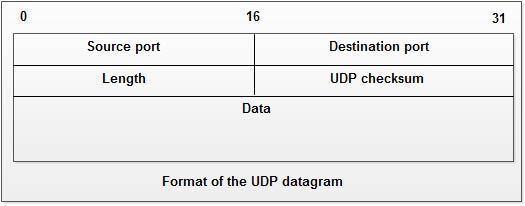In TCP communications, not only TCP but also UDP (User Datagram Protocol) can meet the functional requirements defined in the transport layer. Unlike TCP, UDP is a connection-less type protocol in which the sending terminal does not check whether data has been received by receiving terminal. In other words, it is a less reliable protocol. However, this protocol makes it possible to omit a variety of processes thus reducing the load on the CPU.
The UDP protocol allows applications to exchange datagrams. It uses that the concept of port, which allows to distinguish the different applications running on a machine. Besides the datagram and its data, a UDP message contains a source port number and destination port number.
UDP provides a connectionless service and without error recovery. It uses no acknowledgment, not resequence the messages and sets up no flow control. It is possible that the UDP messages that are lost are duplicated, or delivered out of sequence they arrive too early to be processed upon receipt. As previously explained, UDP is a very simple message protocol level architecture reference model. It has the advantage of a quick execution, taking into account real time constraints or place limitations on a processor. These constraints or limitations may not allow the use of heavier protocols, such as TCP.
Applications that do not require a high level security transmission, and there are many, and the management software, which require quizzes resources prefer to use UDP. Search requests in directories pass through UDP, for example. To identify the different applications, UDP needed to place each fragment in a reference that the port plays role. Figure shows the UDP fragment. A reference identifies, much like the next header field in IPv6, which is carried in the body of the fragment. The most important applications that use UDP correspond to the following port numbers:
• 7: echo service;
• 9: Rejection of service;
• 53: DNS domain name server (Dynamic Name Server);
• 67: DHCP configuration server;
• 68: DHCP configuration client.

The simplicity of the UDP header stems from the unsophisticated nature of the services it provides.

Following is a brief description of each field:
Source Port This is the port number of the application that is originating the user data.
Destination Port This is the port number pertaining to the destination application.
Length This field describes the total length of the UDP datagram, including both data and header Information.
UDP Checksum Integrity checking is optional under UDP. If turned on, both ends of the communications channel use this field for data integrity checks.
At this point, it is important to understand the layering concept along with the need for headers.
 Dinesh Thakur holds an B.C.A, MCDBA, MCSD certifications. Dinesh authors the hugely popular
Dinesh Thakur holds an B.C.A, MCDBA, MCSD certifications. Dinesh authors the hugely popular